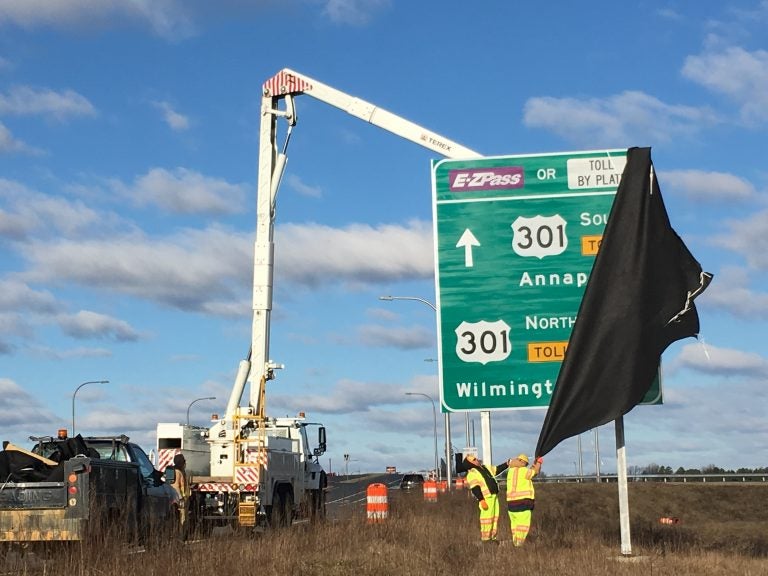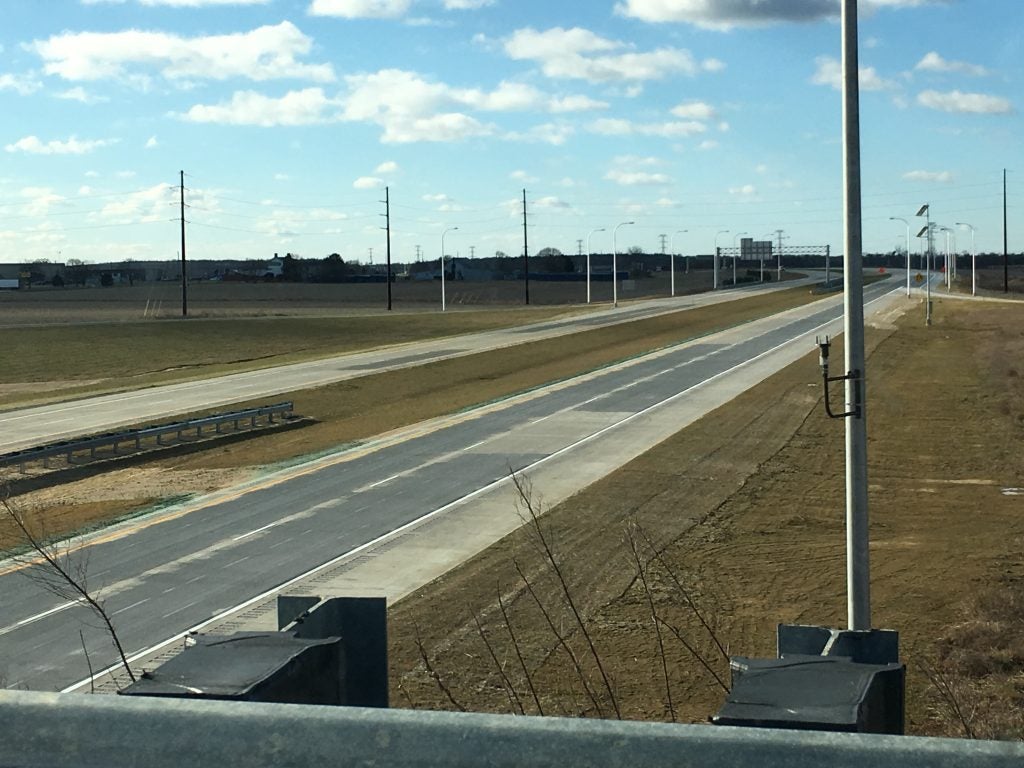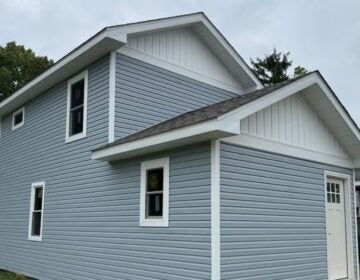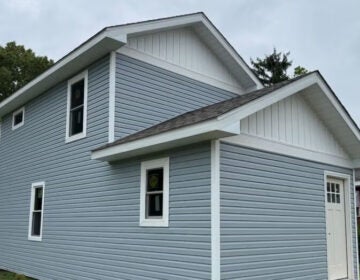Delaware’s new Route 301 highway offers alternate to I-95
The new Route 301 highway cuts congestion and travel time around Middletown, Delaware, and helps speed commuters and truck traffic from Route 1 to the Maryland state line.

Workers unveil signs directing drivers to the new Route 301 near Middletown. (Mark Eichmann/WHYY)
As it cuts congestion and travel time around Middletown, Delaware, the new Route 301 highway also helps speed commuters and truck traffic from Route 1 to the Maryland state line.
The new highway bypasses 29 intersections and 18 traffic signals that frequently caused backups and delays in the burgeoning Middletown area in southern New Castle County. The new road, which opened Thursday morning, offers a 14-mile stretch of 65 mph highway designed especially to get trucks off local roads.
“301 has always been a good alternative to 95, and, unfortunately, Middletown has been a bottleneck because it’s just been a smaller roadway as opposed to when you get into Maryland,” said DelDOT’s C.R. McLeod. “This is hopefully going to alleviate that bottleneck and allow that truck traffic to move much more smoothly … We expect to see a roughly 20 percent reduction in traffic on some of the local road network, because of the trucks now taking 301.”
Initially, DelDOT expects about 6,000 vehicles to use the road every day. “We do expect that to grow, Middletown is a growing community,” McLeod said.

The road is the first in Delaware to use all-electronic tolling. Drivers with E-ZPass will have the toll automatically deducted from their accounts. Those without E-ZPass will be sent a bill for their toll. Two-axle vehicles using E-ZPass will pay $4 to drive the entire length of the road; those without E-ZPass will get a bill for $5.60 that must be paid within 30 days.
Work started on the $636 million project in early 2016 and was split into seven components that were constructed simultaneously. “From the groundbreaking to today, where we’re actually putting traffic on the road, has been less than 1,100 days,” McLeod said. “For roughly 56 lane miles to be built, it’s pretty impressive.”
The state got a $211 million federal loan to pay for a portion of the project, and toll revenue will be used to pay off that debt.
“A significant investment, one that we think is ultimately going pay for itself with the toll revenue that we receive over the next decades to come,” McLeod said.
During construction, workers poured 300,000 cubic yards of concrete and moved 7.3 million cubic yards of dirt to make way for the road. DelDOT estimates that the construction project employed 5,200 construction workers, plus about 2,400 jobs in supporting industries.
While the road is open, some work remains — including an overpass that needs to be completed to connect a local road. Workers will also be finishing up some stormwater ponds. That work will cause some intermittent lane closures through spring.
WHYY is your source for fact-based, in-depth journalism and information. As a nonprofit organization, we rely on financial support from readers like you. Please give today.





